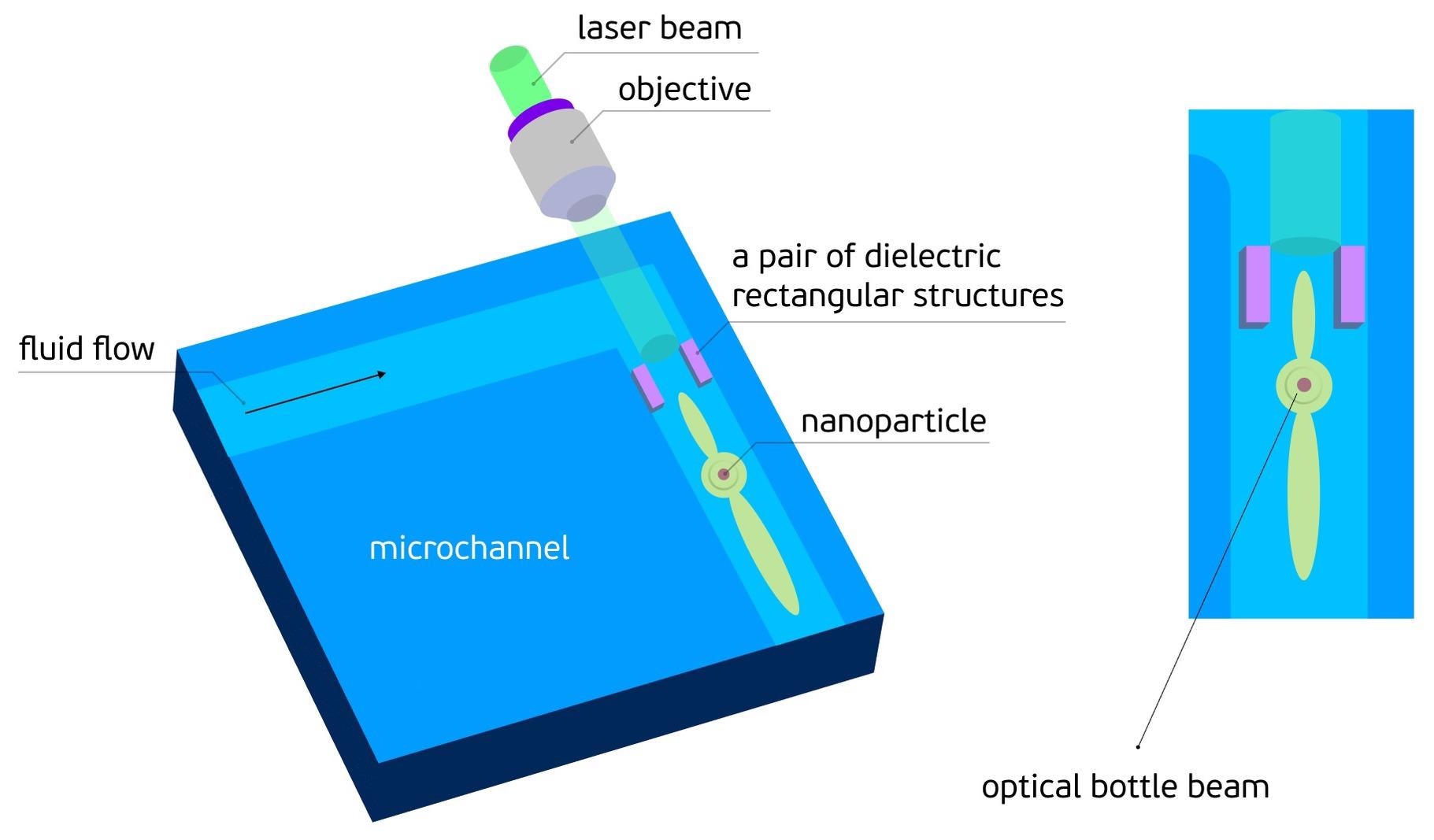Reviewed by Alex SmithFeb 8 2022
Tomsk Polytechnic University (TMU) researchers along with their co-workers from the National Chiao Tung University (Taiwan) have suggested a novel concept of a new optical bottle-beam trap.

Image Credit: Tomsk Polytechnic University.
The researchers illustrated that two dielectric micro-bricks can be employed in the place of the lens. Unlike its alternatives, such a trap could be utilized in lab-on-a-chips (LOC).
The LOC is a device that enables conducting several pieces of research, such as a biochemical one utilizing a few square millimeter chips, and will considerably help in widening the chances of tiny laboratories.
The study findings are reported in the Optics Letter academic journal.
The optical trap is known as an optical capsule. It is a device utilizing a laser beam that captures micro-sized objects not interrupting their inner structure. For example, they could be living cells, molecules, and proteins.
Generally, a functioning principle of the familiar optical capsules is dependent on the application of complexly structured beams.
A lensless technique was suggested by the researchers to develop the optical micro-capsule. In such a case, a closed domain of the field localization is made with the help of two dielectric bricks. The sizes of such bricks are compared with the light wave’s length.
If two dielectric bricks are illuminated with the help of a plane front light from the end dace, the localization field of the light field is developed in output. Under the correct dimensioning of the bricks—the closed domain, a unique ellipse is developed.
Along the edges of the ellipse, there is high intensity of the electric field, while there is zero intensity within the domain. Nanoparticles do not have the ability to pop out this edge. This is the optical capsule.
The process simulation and calculations were performed depending on the solution of Maxwell’s equations. Gold nanoparticles were utilized as samples for the calculations as it is known to be a classical substance to resolve such tasks. Gold nanoparticles are absorbing particles for the selected wavelength.
The concept developed by us allows obtaining a prolate optical trap. It is a definite advantage as such a capsule can capture not only spherical nanoparticles but also prolate ones. In particular, the prolate nanoparticles are viruses. It considerably broadens the range of application of the capsule.
Oleg Minin, Professor, School of Non-Destructive Testing, Tomsk Polytechnic University
Professor Oleg Minin headed the project.
In the next experimental stage of the study, the researchers intend to test the idea practically. The lensless optical traps could be employed in biology, medicine, as well as in the synthesis of new materials.
Journal Reference:
Minin, O. V., et al. (2022) In-plane subwavelength optical capsule for lab-on-a-chip nano-tweezers. Optics Letters. doi.org/10.1364/OL.447986.